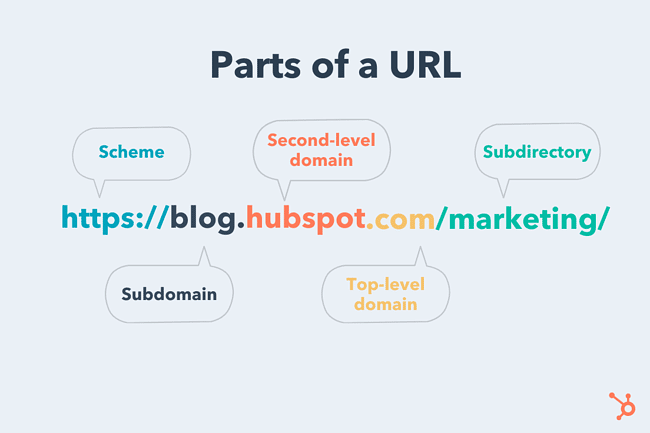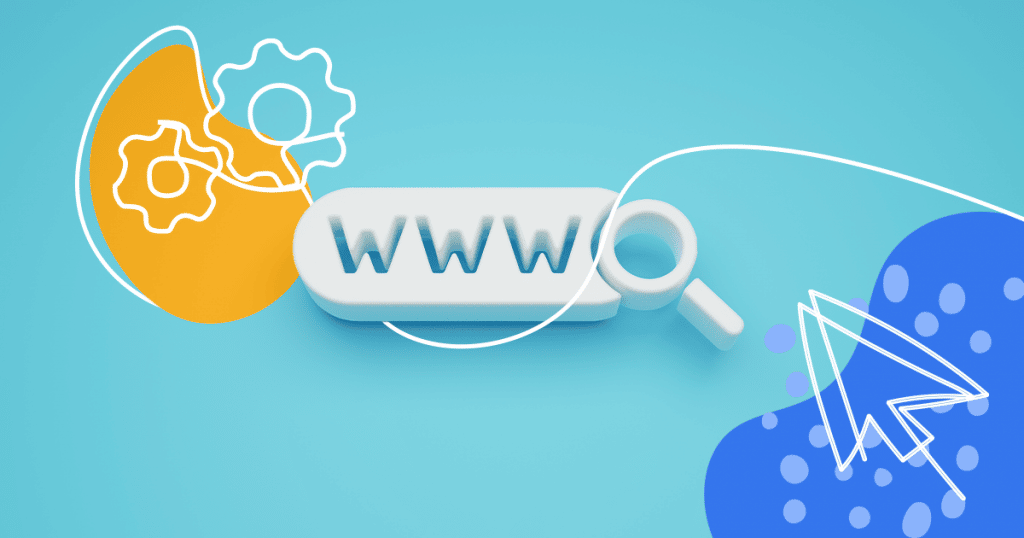Digital marketing depends largely on SEO.
SEO, or search engine optimization, is the process of ranking your website pages and content higher in search engines like Google.
Without it, it’s hard for your website pages to get found and rank high enough on search engines to bring in organic traffic.
There are many different things that contribute to SEO. You need to use high-ranking keywords, write readable content, and appropriately list metadata.
Another part of proper SEO is making sure that your URLs are correct. While some marketers might know what a URL is, they may not know the components of the URL or how they are structured.
In this article, we’ll help you learn the different parts of a URL and why they matter.
We’ll also provide some best practices to use in your URL creation to help boost your SEO and improve your website rankings.
What is a URL?
URL stands for uniform resource locator. It is also referred to as an internet address, web address, or link, and is the reference that is used in a search engine to locate a web page.
You can think of a URL as a house address. It gives someone looking for your address the tools they need to locate the house.
Just like every address is different, each URL is unique. In addition to helping search engines like Google locate your web pages, a URL also gives information about what the page is about.
This helps both search engines and readers understand more about your brand and learn what type of information will be contained on the page.
Why Do URLs Matter?
URLs are incredibly important to your website.
Without a URL, a page does not exist. It needs the URL in order to be found by anyone on your website.
They also allow search engines like Google to index your pages and create data files that explain what type of information is hosted on the page.
A URL is one of the most important factors that search engines like Google will take into consideration when determining what a page is about.
There are also some other reasons why URLs matter and why they are important for SEO.
Improve User Readability
While search engines have algorithms that crawl every page and track the URL structure, there are also important user reasons for having strong URLs.
When a URL is clearly structured, it’s easy for a reader to learn what is on the page.
The title of a blog will let a user know what the subject they are about to read is, and a carefully listed product page will help them learn what categories of products they are looking in.
Improve Share Rates
Have you ever gone to share a link and realized it was just a long stream of numbers and symbols that took up several lines in your message app?
If this happens, many people just consider it too much work to bother sharing.
When your URLs are clean and simple, it encourages more people to share and increases your share rates.
Increase Rankings
Just like readers and customers look at your URLs for readability, search engine algorithms do the same.
When a web address is messy, complicated, and unreadable, the search engine algorithms are less likely to rank it high on search engine results pages.
This is due to the fact that search engines want to be able to quickly scan a URL and know all the information they need.
Unreadable URLs will hurt your rankings and make it harder for customers to find your pages.
Build Authority
The authority of your website refers to the trust that Google and other search engines put in it.
You likely notice that some brands have web pages that rank high for nearly every term.
This is because Google knows that these sites have trusted content that delivers on the URL promise and is received well by readers.
If your URLs are built correctly, it increases the chances of Google putting trust in your web pages.
Parts of a URL Every Marketer Must Know
Let’s look into the structure of a URL and go over the parts of a URL that you need to know in order to create them.
Without the knowledge of what the different parts of a URL are, it’s hard to know whether or not the URLs you create are going to work well in Google and other search engines or if they have issues that need correcting.

1. Scheme or Protocol
The scheme of a URL tells web engines what protocol to use when accessing the page.
The most common scheme is HTTPS, which stands for hypertext transfer protocol secure. It tells the web browser to encrypt information on the page like personal information to protect it from cybercriminals.
There are other schemes like mailto:// or ftp://, but these are less common and are only used in special circumstances like emailing or transferring files.
2. Subdomain
The subdomain refers to the specific areas of a website that the web page is directing to.
For example, if you have a blog, the URL will have the “blog” subdomain listed right after the scheme to let search engines know what part of the website is being accessed.
3. Domain
The domain is the most recognizable part of a URL, and refers to the main website page or brand domain that all other pages are linking to.
Simply put, it is the name of your website. It appears after the subdomain in the URL (like subdomain.domain.com).
4. Top-Level Domain
The top-level domain refers to the type of organization or entity that your website is registered as on the internet.
The most common top-level domain is .com, but there are also domains like .net, ,edu, or ,org to signify different types of entities.
5. Subdirectory
The final part of a URL you need to know is the subdirectory.
This is the sub folder that helps web crawlers and readers understand more about the particular part of a web page that they are viewing.
It usually comes after the top-level domain and is differentiated by a slash.
You may also be interested in these articles:
URL Structure: Best Practices to Create SEO-Friendly URLs
Now that you understand what the parts of a URL are, let’s dive into some best practices you can employ to make sure they are working for you.
When a URL isn’t structured properly, it can lead to you losing out on the benefits that you could be receiving if you have a more clear and clean URL.
Use HTTPS Protocol
As mentioned earlier, HTTPS is the most common protocol used in URLs.
This is because it encrypts personal information and makes it harder for criminals to find your information. By using this protocol on your pages, you help to protect your web visitors.
Keep URLs Simple, Short, and Relevant
Overly complicated URLs can be hard to read for both your human customers and search engines.
By keeping URLs short, simple, and relevant to the content that is on the page, you can avoid confusion and keep your pages easy to reach.
Make it Keyword Rich
Using keywords in your URLs can help ensure that you rank high for important terms that are relevant to your pages and your industry.
This is a great SEO strategy that you can use to help make sure your ranking terms show up in key areas of your website, pages, URLs, and metadata.
Wrap Up
Making sure that your URLs are structured correctly is an important part of building SEO for your brand and ensuring that your pages can be found online.
When you don’t know the parts of a URL, it can be hard to know if you are using the right structures or if there is room for improvement. But once you are more familiar with the parts of a URL, you can create better URL strategies.
URLs are one of the major reasons you might be getting penalized by search engine algorithms.
When you are penalized for incorrect URL structures or other SEO errors, it can damage your website’s authority and rankings on search engines.
When you don’t know what these errors are, however, it can be difficult to know what mistakes to fix.
That’s where Google penalty checker tools come in. We’ll give you some guidance on what tools are out there and which might work best for your brand. Click the link to learn more!


![[ROCK NA] [EBOOK SEO] Complete Guide](https://rockcontent.com/wp-content/uploads/2024/06/banner_Search-Engine-Optimization.png)






